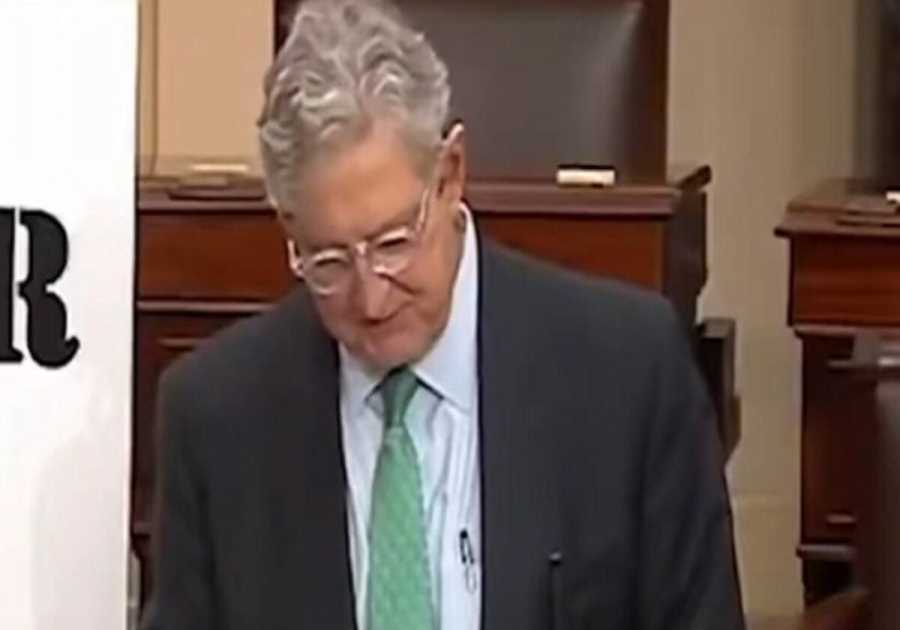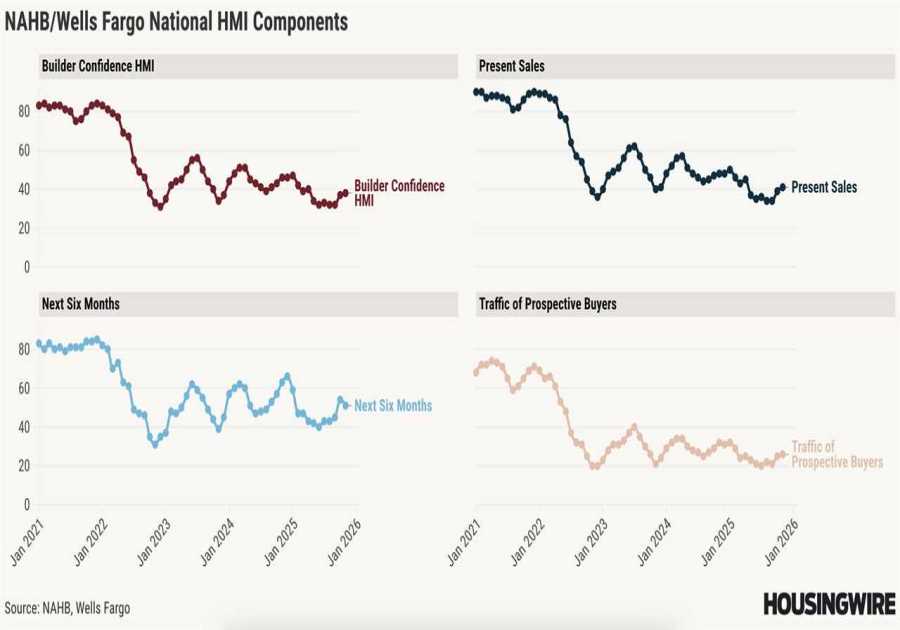The best way to deal with inflation is always adding more supply: if you’re trying to defeat inflation by destroying demand, you’ve already lost the battle and will hurt future production. That’s why today’s housing completion data was excellent news.
During a traditional recession, builders typically show lower starts, permits, and completion data. However, in an odd twist, builders now they have a massive backlog of homes they need to finish, which is historically abnormal. This is the reason construction workers still have jobs, and that backlog needs to be finished; this is a positive outcome.
The bigger story here is that if we want to see mortgage rates fall, we need more rental units, and right now we have a massive backlog of 2-unit homes under construction — over 900,000. If we didn’t have this backlog of rental units that need to be built, the inflationary story wouldn’t look so bright next year, meaning that we would have higher inflationary data for longer.
So in the latest Census report, housing completion data grew. Still, outside of that, it’s a story of a sector in a traditional recession, something I wrote about in June and talked about on CNBC several months ago. With that said, let’s look at today’s housing starts data.
From Census: Housing Completions Privately owned housing completions in November were at a seasonally adjusted annual rate of 1,490,000. This is 10.8 percent (±15.8 percent)* above the revised October estimate of 1,345,000 and is 6.0 percent (±17.6 percent)* above the November 2021 rate of 1,406,000. Single-family housing completions in November were at a rate of 1,047,000; this is 9.5 percent (±12.9 percent)* above the revised October rate of 956,000. The November rate for units in buildings with five units or more was 430,000.
Traditionally, housing starts, permits, and completions would move together, like what we saw in 2002-2005. However, due to the supply chain lag, it took too long to build homes over the last several years. The upside to that is that the builders have this backlog keeping construction workers employed and creating more supply to fight inflation next year.
The housing recession story is separate from the housing completion story and inventory backlog. Housing permits are falling, since builders need to be more confident in building something. Cheaper housing is a terrible business model because the builders need to get paid. So, the housing permits story is done. The builders will finish what they are legally obligated to do. After that process, it’s all about rates, rates and more rates.
From Census: Building Permits Privately owned housing units authorized by building permits in November were at a seasonally adjusted annual rate of 1,342,000. This is 11.2 percent below the revised October rate of 1,512,000 and 22.4 percent below the November 2021 rate of 1,729,000. Single-family authorizations in November were at a rate of 781,000; this is 7.1 percent below the revised October figure of 841,000. Authorizations of units in buildings with five units or more were at a rate of 509,000 in November.
In the chart below you can see more evidence of the housing recession; permits are falling as expected with demand getting weaker. From 2002-2005 it was a steady rise to the top of the housing bubble, and then it burst. We see how wild the COVID-19 data has been, but if you smooth out the heated parts, we never got production close to what we saw during the housing bubble years. 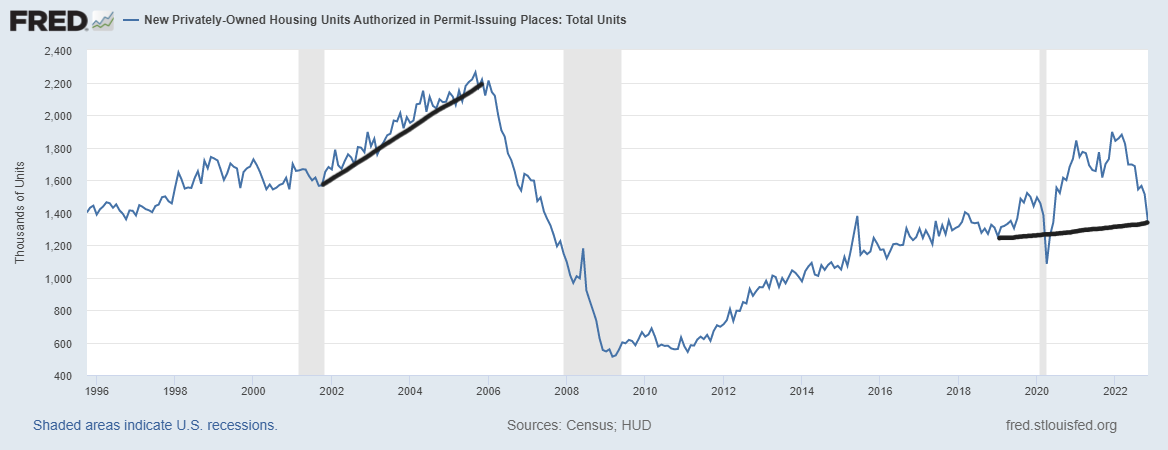
Housing starts are also done. The builders have a backlog here, but they are lower than they do with the multifamily sector. We should be grateful that the backlog exists because otherwise construction labor would have already been hit.
From Census: Housing Starts Privately owned housing starts in November were at a seasonally adjusted annual rate of 1,427,000. This is 0.5 percent (±12.3 percent)* below the revised October estimate of 1,434,000 and is 16.4 percent (±13.4 percent) below the November 2021 rate of 1,706,000. ingle-family housing starts in November were at a rate of 828,000; this is 4.1 percent (±11.3 percent)* below the revised October figure of 863,000. The November rate for units in buildings with five units or more was 584,000.
The most extensive housing recessionary data line is in the single-family starts. As we can see in the chart below, single-family starts are heading toward the lows we had in COVID-19. The homebuilders will not issue any new permits to build single-family homes until they can get their monthly supply levels down.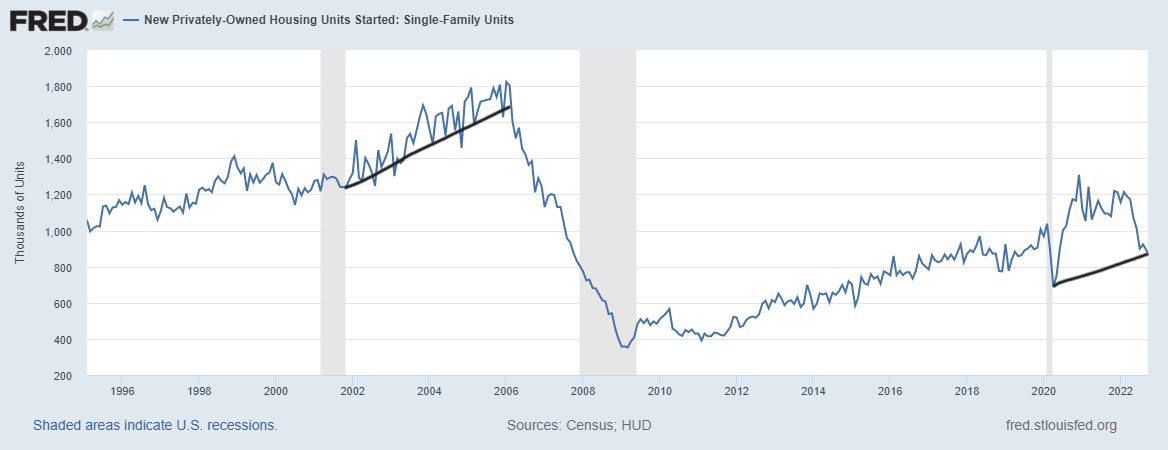
My rule of thumb for anticipating builder behavior is based on the three-month supply average. This has nothing to do with the existing home sales market; this monthly supply data only applies the new home sales market.
- When supply is 4.3 months, and below, this is an excellent market for builders.
- When supply is 4.4 to 6.4 months, this is an OK market for the builders. They will build as long as new home sales are growing.
- The builders will pull back on construction when the supply is 6.5 months and above.
We currently have 8.9 months of supply, and we will get an update on this data line next week.
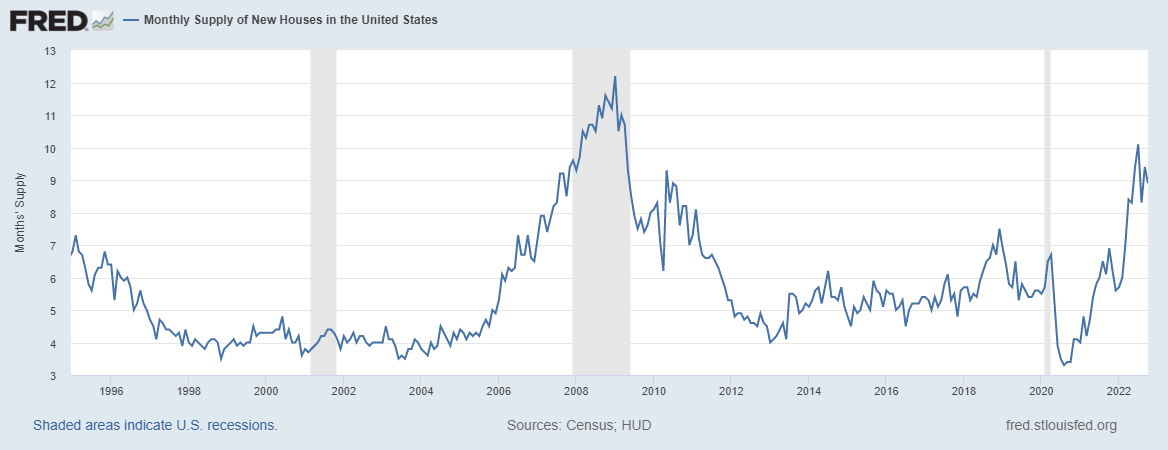
The builder’s confidence data came out yesterday, and the decline in this index continues. As long as this is the case, the housing recession regarding the future production of homes outside the backlog will continue.
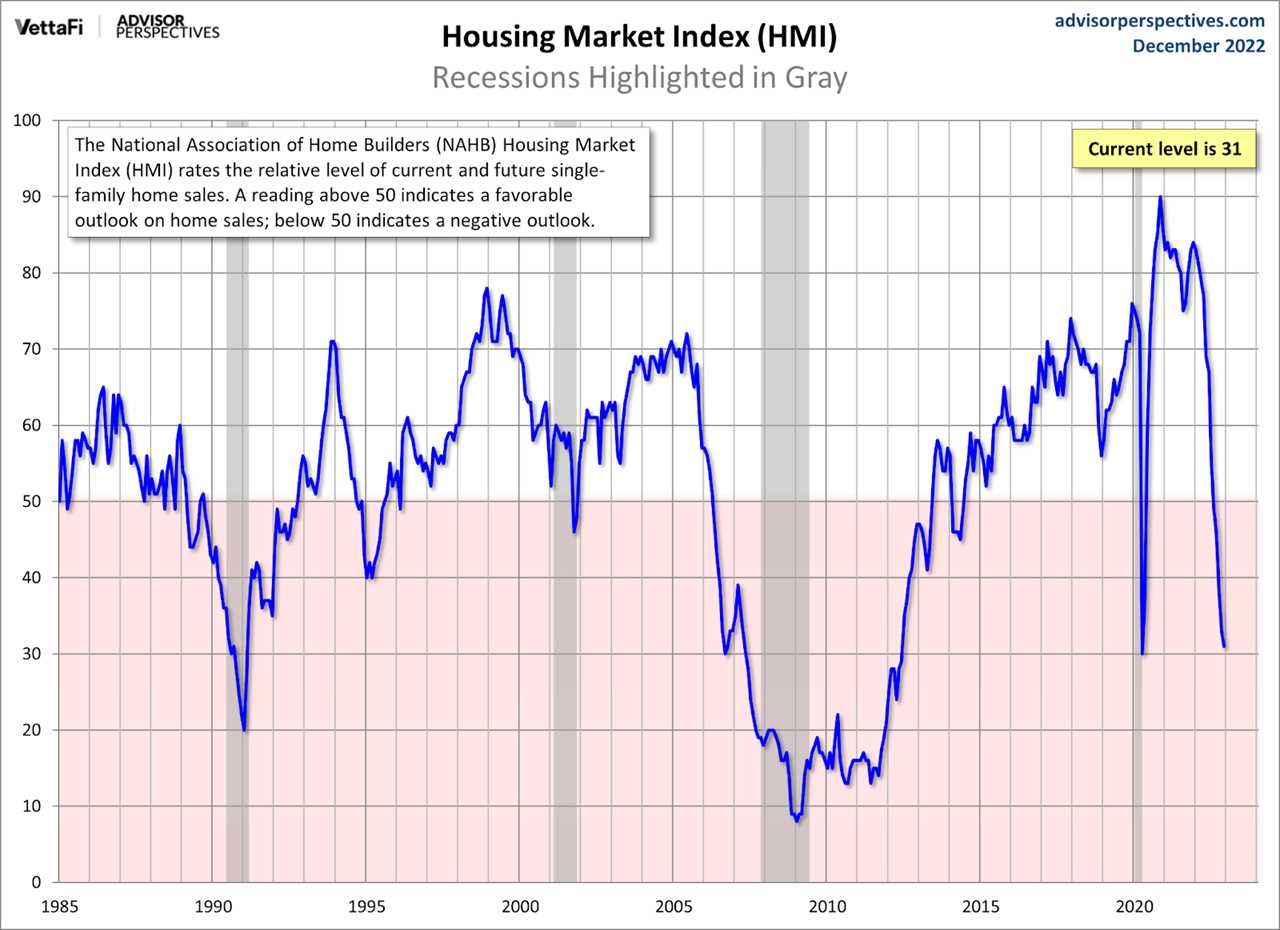
Except, we had one bit of good news. The forward-looking data regarding sales looking out six months was positive.
From the NAHB/Wells Fargo Housing Market Index (HMI): “The silver lining in this HMI report is that it is the smallest drop in the index in the past six months, indicating that we are possibly nearing the bottom of the cycle for builder sentiment. Mortgage rates are down from above 7% in recent weeks to about 6.3% today, and for the first time since April, builders registered an increase in future sales expectations”.
Over the last six weeks, we have seen that buyers came back in the data line when mortgage rates fell from 7.373% to 6.12%. The forward-looking purchase application data found a bottom in the data line and has been rising ever since. Mortgage rates have increased from the lows recently. However, this is a good sign that we don’t even need to get rates back down to 5% to find some stabilization. We need rates to get to the low 6% range with duration for the market to find some stabilization.
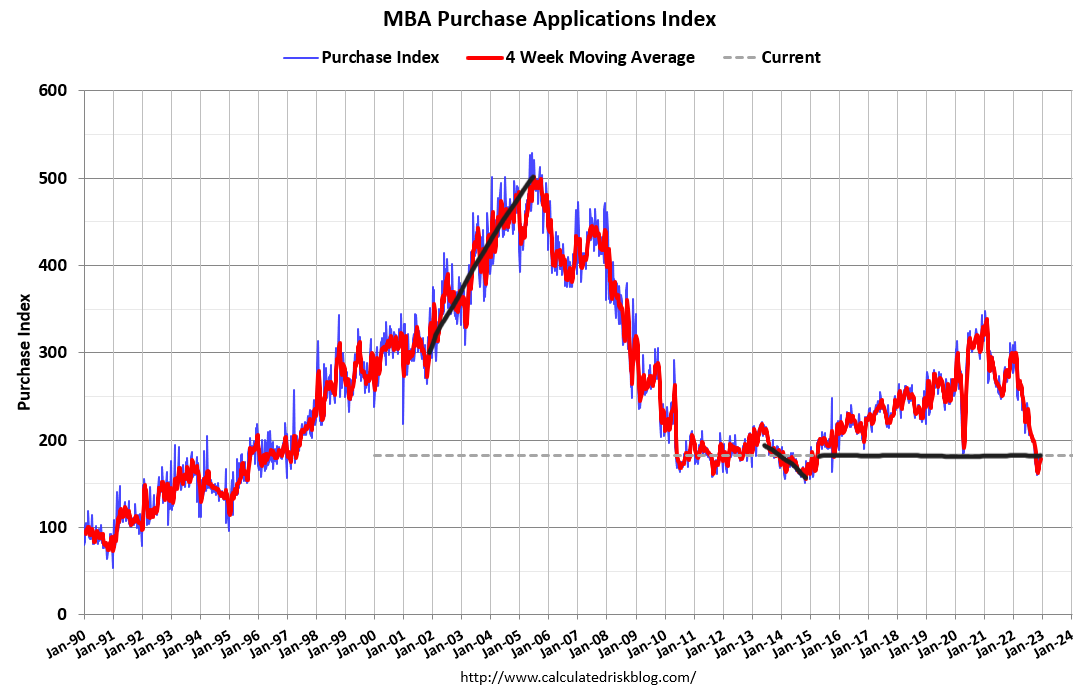
The housing starts report was good only because housing completions rose, and that’s the most positive story we can have for having mortgage rates to go lower next year. The housing recession, which started in June, is still going on, as we can see with the builders confidence index collapsing. The longer this housing recession goes, the less productive we will see.
I do expect a significant slowdown in multifamily construction next year, but the backlog of over 900,000 units under construction is something we all should be rooting for to get done. To have a sustained move lower in mortgage rates, the growth rate of inflation needs to fall, and shelter inflation is the big driver of core inflation.
Read More
By: Sarah Wheeler
Title: Completion data is positive news for housing market
Sourced From: www.housingwire.com/articles/completion-data-is-positive-news-for-housing-market/
Published Date: Tue, 20 Dec 2022 22:16:05 +0000
Did you miss our previous article...
https://trendinginbusiness.business/real-estate/a-minimalist-home-in-upstate-new-york-channels-its-natural-surroundings
.png)
